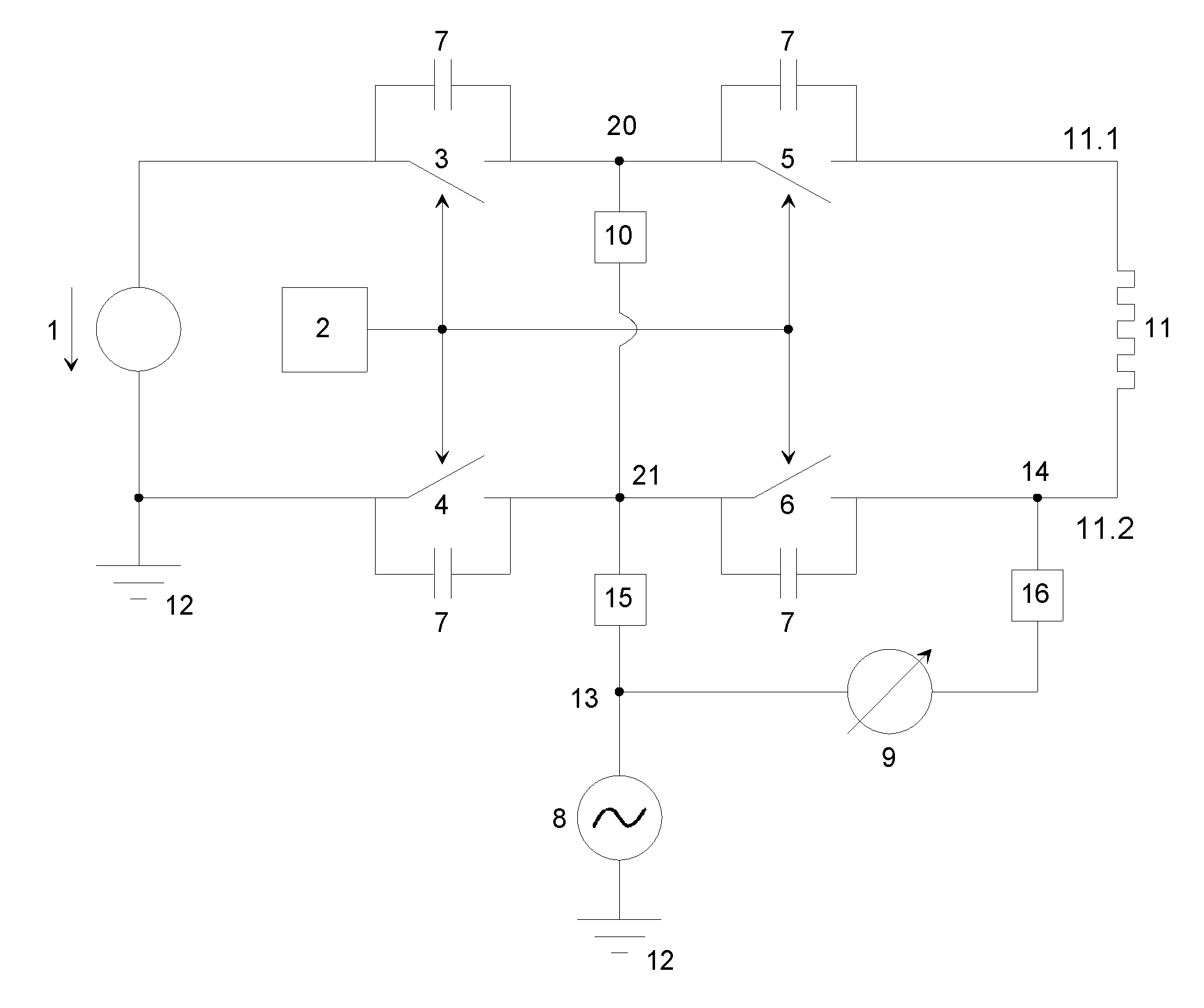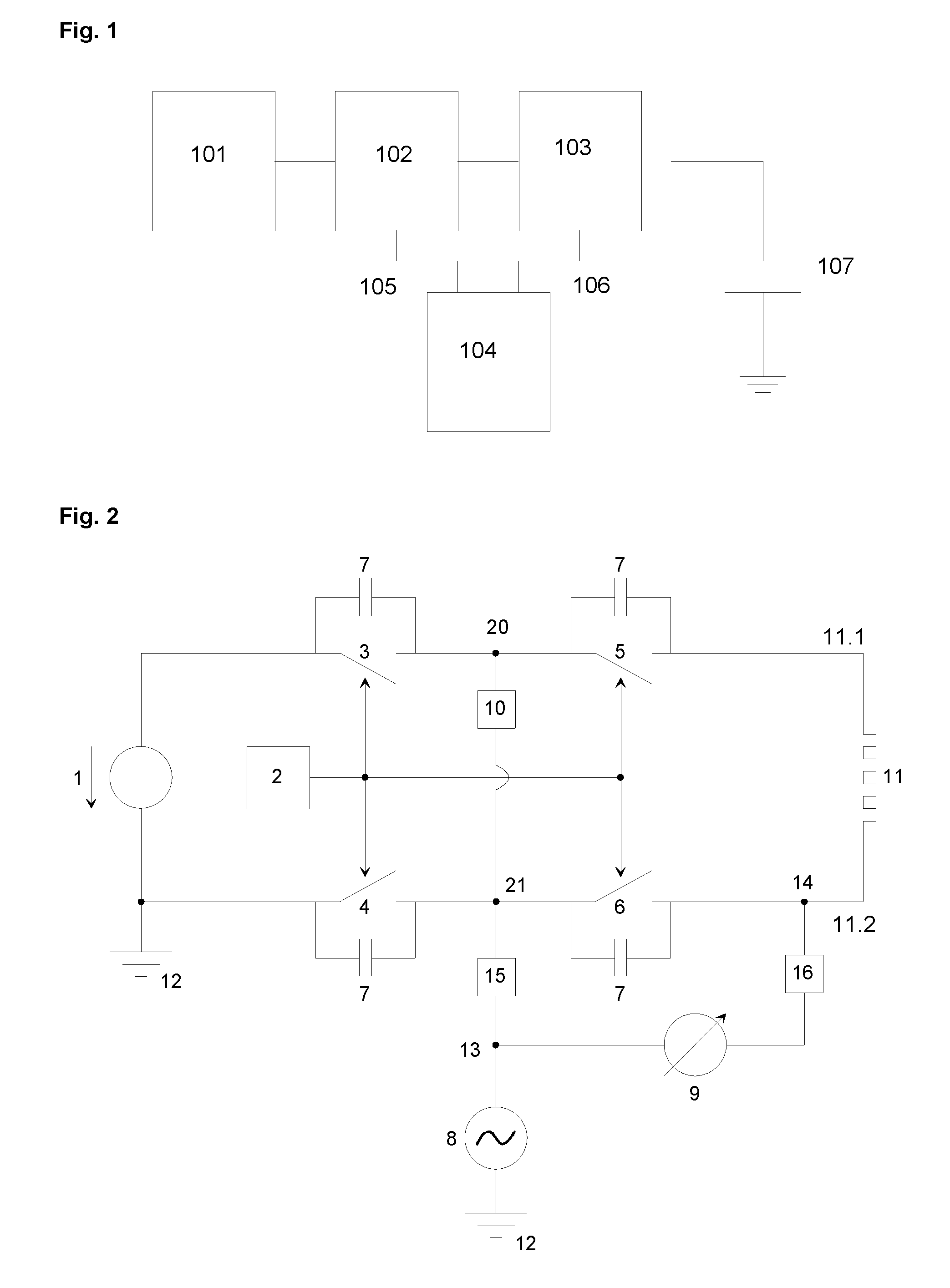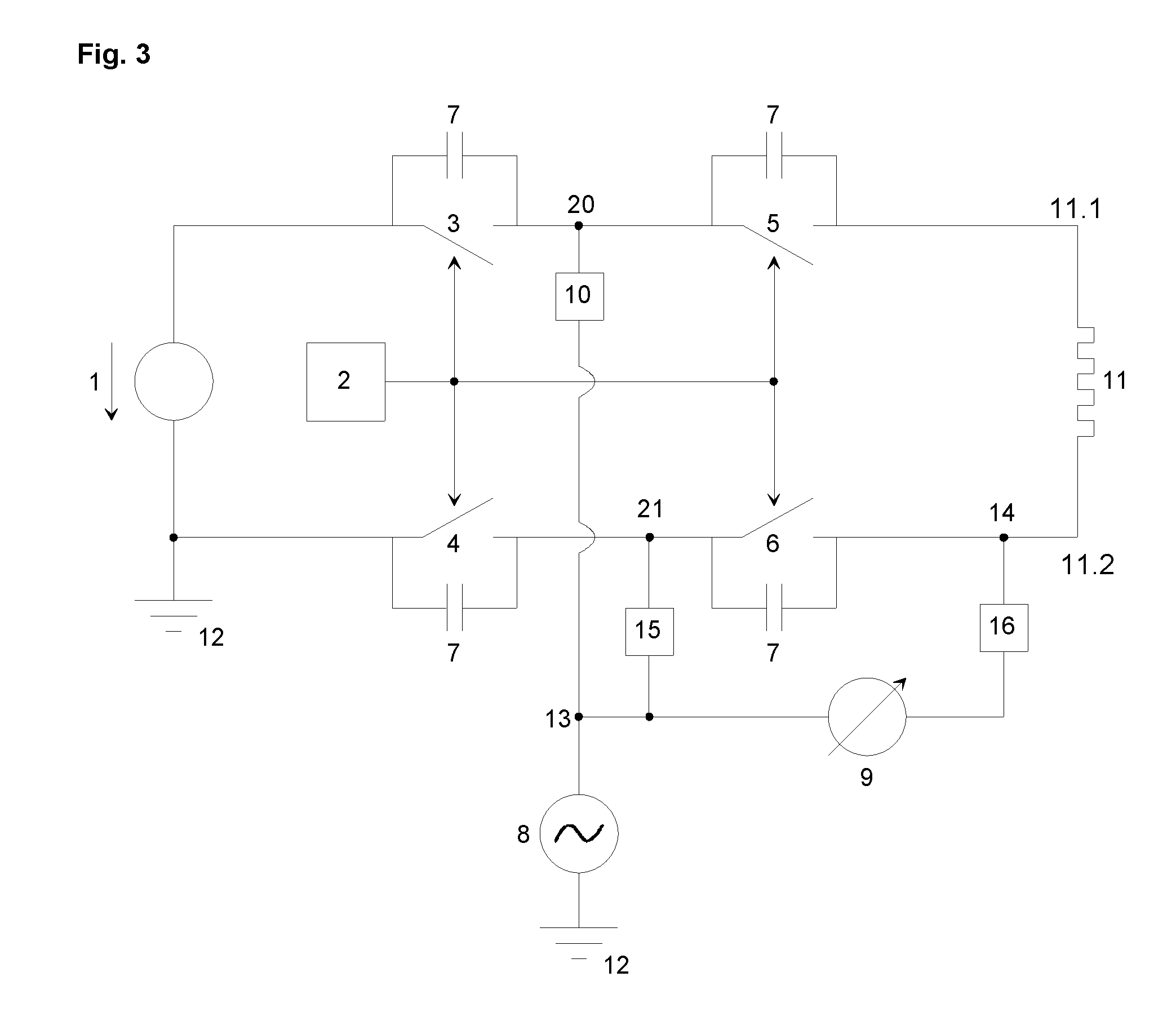Heating element operated as capacitive sensing electrode
- Summary
- Abstract
- Description
- Claims
- Application Information
AI Technical Summary
Benefits of technology
Problems solved by technology
Method used
Image
Examples
Embodiment Construction
[0023]List of reference numbers used in FIG. 1:
101seat heater supply circuit102isolation / decoupling circuit103heating element104capacitive sensing circuit105guard / shield signal106sense signal107capacitance between heating element andground, depending on occupancy state
[0024]A seat heating element 103 is supplied with current by a seat heating circuit 101. The heating element 103 is connected to a capacitive sensing unit 104 via the sense connection 106 to be operated as a capacitive sensing electrode. During the capacitive measurement the seat heater supply circuit 101 has to be isolated from the heating element 103 and the capacitive sensing unit 104. Therefore, an isolation circuit 102 is provided that comprises a plurality of switches. The capacitive sensing circuit 104 generates an AC voltage and the current flowing into the heating element in response to the applied AC voltage is measured. To minimize the influence of parasitic capacitances inside the isolation circuit 102 and ...
PUM
 Login to View More
Login to View More Abstract
Description
Claims
Application Information
 Login to View More
Login to View More - R&D
- Intellectual Property
- Life Sciences
- Materials
- Tech Scout
- Unparalleled Data Quality
- Higher Quality Content
- 60% Fewer Hallucinations
Browse by: Latest US Patents, China's latest patents, Technical Efficacy Thesaurus, Application Domain, Technology Topic, Popular Technical Reports.
© 2025 PatSnap. All rights reserved.Legal|Privacy policy|Modern Slavery Act Transparency Statement|Sitemap|About US| Contact US: help@patsnap.com



